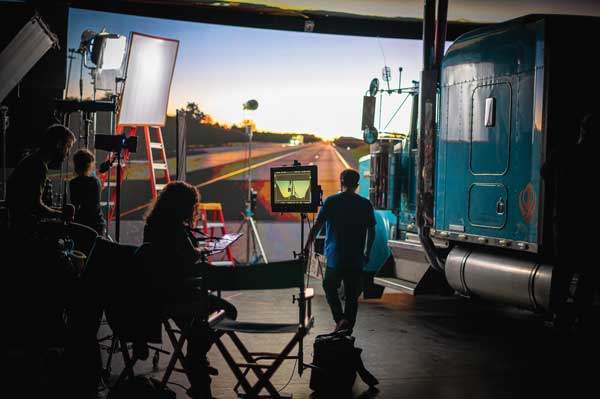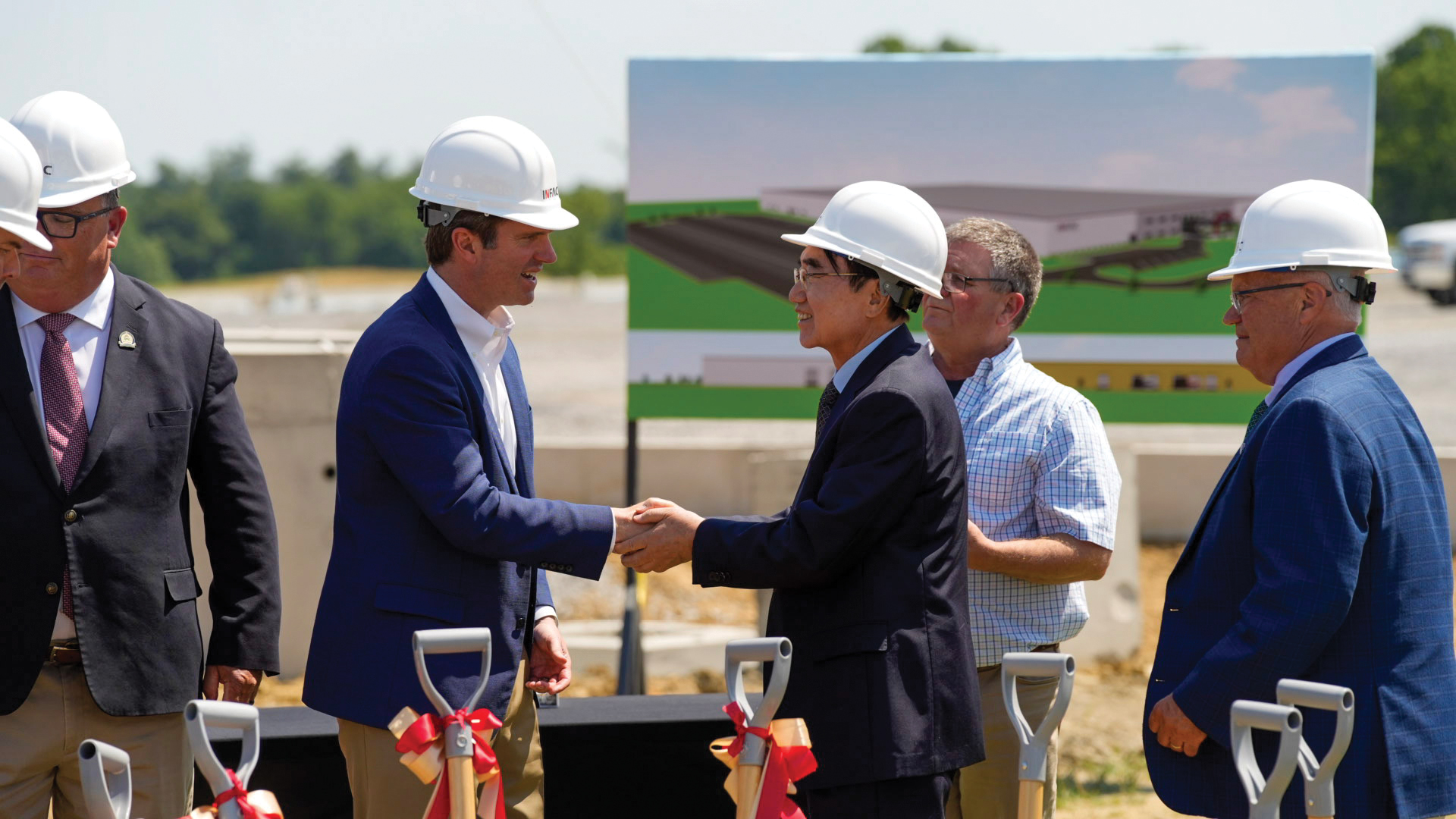|
|
|
|
|
|
|

|
|
|
Making Third Places First in Your Heart
“In our increasingly connected yet isolated modern world,” writes guest contributor Steven Cornwell, “third places have emerged as invaluable spaces where people can gather, strengthen relationships and find reprieve beyond the daily grinds of work and home life.” Learn why he thinks integrating third places into urban planning is important for the future of cities.
|
|
Read More >>>>
|
|
|
|
|
|

|
|
|
TRIBAL ECONOMIC DEVELOPMENT
An Oklahoma Story
Native tribes contribute more than $15 billion to the state economy, including a growing film studio and a new riverfront development.
|
|
Read More >>>>
|
|

|
|
|
INVESTMENT PROFILE: PORTUGAL
Lab to Fab
Portugal’s innovation mindset cultivates a growing sweet spot for the global semiconductor industry.
|
|
Read More >>>>
|
|
|
|
|
ADVERTISEMENT

|
|
|
|

A digital twin image of Hamilton, Ontario
Rendering courtesy of 3D CityScapes
|
|
Another swath of the seemingly endless stream of federal funding related to the CHIPS and Science Act was announced earlier this week when the Biden-Harris Administration announced a notice of funding opportunity “seeking proposals from eligible applicants for activities to establish and operate a CHIPS Manufacturing USA institute focused on digital twins for the semiconductor industry.” Digital twins are virtual models that mimic the structure, context, and behavior of a physical counterpart, a Department of Commerce release explained. “The CHIPS for America Program anticipates up to approximately $285 million for a first-of-its kind institute focused on the development, validation, and use of digital twins for semiconductor manufacturing, advanced packaging, assembly, and test processes.”
Among our first encounters with the digital twins concept was a conversation with Brian Trinh, senior coordinator of strategic partnerships at 3D CityScapes in Toronto, whose image graced our March 2021 Ontario Spotlight “Have You Seen Hamilton?” The firm bases its work on Unreal Engine by Epic Games. The firm’s recent projects have include a wellness-focused residential community in Sevierville, Tennessee; a sports facility in Toronto; and a condo community in Vaughan, Ontario. Watch for the annual Canada’s Best Locations report in the September 2024 issue of Site Selection.
|
|
|
|

|
|
|

Zonamerica Colombia: Attracting Investment to Cali, Colombia; Generating Employment in the Region and Encouraging Exports
Zonamerica is a platform that connects companies with the world.
We have been operating for five years in the south of Cali, Colombia, within a sector called “educational cluster” due to its proximity to universities and schools with high-quality education.
Here we attract investment to the city, generating quality employment and encouraging exports. Since companies that operate in Zonamerica are part of a special Free Trade Zone regime that allows them to access tax and customs incentives, reaching higher levels of competitiveness.
Video:
https://www.youtube.com/watch?v=cD_4gH1q0Pc
Our value promise is to deliver offices with world-class infrastructure, offering collaborative spaces, common areas, commercial premises, high availability of parking, security and well-being environments. With integrated services that facilitate the growth of companies and their teams.
We are a campus focused on business and economic development.
¡Your company must be in Zonamerica! We’re the ideal place to develop innovation and creativity.
For more information or to schedule your visit to our campus, contact us at ventaszaco@zonamerica.com or +57 3108984279
|
|
|
|

|
|
The Conference Board Employment Trends Index™ (ETI), released earlier this week, decreased in April to 111.25, from a downwardly revised 112.16 in March. It’s part of an entire suite of data and analysis meaningful to global location decision-makers. “April payrolls data showed an increase in employment (+175,000) for the 39th consecutive month,” said Will Baltrus, associate economist at The Conference Board. “However, between the decrease in the topline number and the narrowing of job gains across sectors relative to recent months, the labor market is beginning to show signs of cooling following a period of very strong growth since the pandemic recession. Nonetheless, it is unlikely that substantial job losses will occur over the coming months, as employers are still facing labor shortages. In April, the Percentage of Firms with Jobs Not Able to Fill Right Now — a component of the ETI — ticked up to 40% and remains elevated compared to prepandemic levels. Despite labor shortages for some firms, many other firms are not looking to hire, but are also not letting workers go, which is known as ‘labor hoarding.’ Shortages and hoarding are keeping the unemployment rate low and wages sticky.”
|
|
|
ADVERTISEMENT

|
|
|
|

|
|
FOREIGN DIRECT INVESTMENT
‘Strategically, The Right Location’
South Korea-based INFAC, which is expanding an EV-related facility in Campbellsville, is one of an estimated 740 international companies operating in Kentucky, a state where 8.6% of total employees are connected to foreign direct investment.
|
|
|
|

|
|
PHOTO GALLERY
The Spirit of Kentucky
From Thoroughbred horse farms to distilleries, urban hot spots, lakes and parks, these images capture the uncommon wealth of beautiful places across the commonwealth.
|
|
|
|
|
|
|
|

Photo copyrighted by C.D. Arnold courtesy of Library of Congress Prints and Photographs Division
|
|
Exactly 131 years ago last week, there was arguably no better “third place” — however temporary — than the World’s Columbian Exposition in Chicago on opening day, as crowds gathered across 600 acres of Jackson Park, designed by Frederick Law Olmsted. Documenting the fair was official photographer Charles Dudley (C.D.) Arnold.
Also known as the Chicago World’s Fair, the event took place over six months and welcomed more than 27 million visitors from around the world to the city chosen by Congress over the other candidate cities of New York; Washington, D.C.; and St. Louis, Missouri. Those familiar with Erik Larson’s book “The Devil in the White City” will recall the exposition was nicknamed the “White City” due to its array of white buildings, showcasing the ideas behind chief architect Daniel Burnham’s “City Beautiful” movement. The Chicago Architecture Center notes that the event “promoted the rapid urbanization of the South Side. New corridors of development grew along the lake and the new elevated “L” train line (today’s CTA Green Line) and new housing blocks were built for the fair’s workers.”
|
|
|
|










